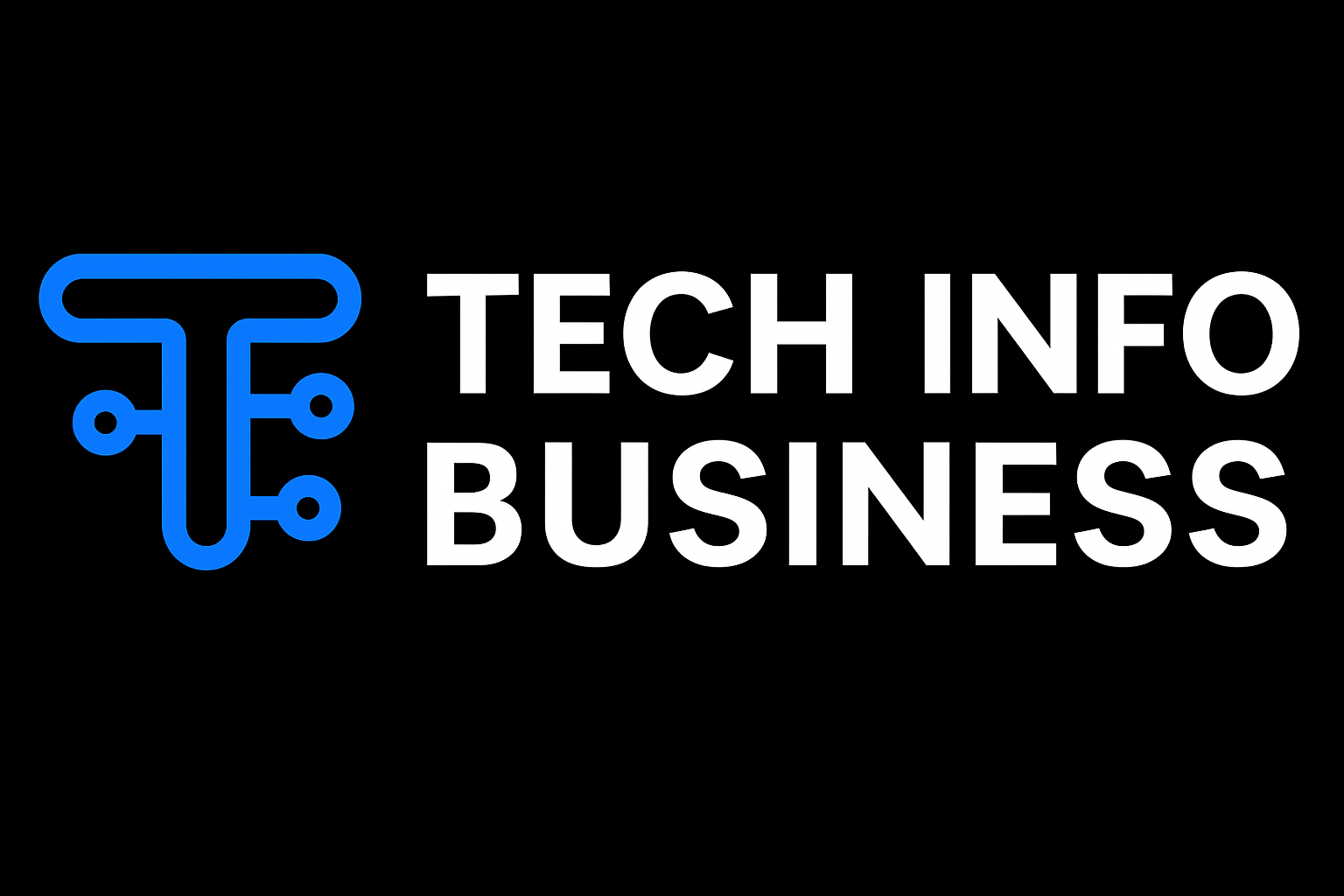Artificial intelligence has gone from buzzword to business reality. In 2025, the question for small business owners isn’t whether to use AI — it’s how. But while headlines promise an AI revolution, Main Street’s experience tells a more balanced story: progress, yes, but also patience.
Across the country and around the world, small and medium-sized businesses (SMBs) are finding ways to make AI work for them — not as a magic fix, but as a practical partner. According to Salesforce’s 2025 Small and Medium Business Trends Report, three out of four small businesses are already investing in AI, and more than a third have woven it directly into daily operations. Yet, conversations with small business owners show that many are still taking cautious first steps, often relying on AI tools quietly built into the software they already use.
So what does that really look like? Here’s how small businesses can use AI in 2025 — and what’s actually working.
1. Using AI Where It’s Already Built In
For many small businesses, AI adoption starts by accident. Rather than hiring developers or launching bold experiments, they discover that the apps they already rely on — like accounting platforms, marketing tools, or scheduling software — have quietly grown smarter.
Take Rand Larsen, founder of Scalepath, a company that connects small business owners through peer learning. Larsen says most of his members use AI indirectly, through features built into existing platforms. One cleaning company, for instance, uses Zapier and ChatGPT to automatically respond to Google reviews. Another relies on expense software that scans and categorizes receipts using AI. The payoff? A few saved minutes each day — modest but meaningful.
This “invisible AI” helps business owners reclaim time without disrupting their workflows. The key lesson: start with what you already use. Before shopping for new tools, check whether your current systems include automation, text generation, or predictive features. You may already be sitting on AI potential you’re not using.
2. Streamlining Routine Work
AI is proving especially valuable for repetitive, time-consuming tasks — the kind that eat into evenings and weekends. From writing replies to managing inventory, automation can handle the heavy lifting so humans can focus on judgment and creativity.
Alex Jones, owner of iRepairBermuda, uses AI to write internal tools that track tasks and productivity. While he admits the impact so far has been modest, the benefits add up: smoother organization, faster documentation, and fewer mistakes. Across industries, small businesses are using AI to automate scheduling, generate invoices, sort emails, and even summarize customer feedback.
Recent studies show that the majority of small businesses using AI report smoother, more efficient operations. The goal isn’t to replace employees — it’s to simplify work and eliminate bottlenecks. In 2025, true growth comes from smarter efficiency.
3. Supercharging Marketing and Sales
One of the most common ways small businesses can use AI in 2025 is in marketing — especially for teams without dedicated marketing staff. AI-powered tools help with everything from email subject lines to social-media captions and ad targeting.
According to the Salesforce report, the top marketing use cases include:
- Optimizing campaign timing and messaging
- Generating blogs, emails, and social posts
- Recommending products customers are most likely to buy
- Running smarter, conversational searches on websites or CRMs
- Using chatbots to answer common questions 24/7
These are real-world wins. In Arizona, Fady Ebeid, owner of Pinnacle Building Services, uses a tool called Invideo to turn written training manuals into short videos for employees — an idea that could easily extend to marketing content. It takes him just ten minutes to produce a polished explainer video.
AI content creation isn’t about outsourcing creativity; it’s about speeding up production and freeing teams to focus on strategy. Even the smallest businesses can now maintain a consistent online presence without the cost of a full-time marketing team.
4. Personalizing the Customer Experience
Customers today expect personalization — and AI delivers it at scale. Even for small retailers or service providers, machine learning can analyze past purchases, browsing behavior, and preferences to recommend the right product or service.
Salesforce calls this “giving every shopper their own personal assistant.” When used wisely, it deepens relationships rather than automating them away. AI chatbots can now answer questions in natural language, guide users through options, or escalate complex issues to a human agent.
For small businesses, the challenge is trust: introducing automation without making customers feel watched. The best approach is transparency — let customers know when they’re interacting with AI and give them a quick path to a real person. Done well, personalization feels helpful, not invasive.
5. Making Better, Faster Decisions
Beyond automating tasks, AI can now assist with strategic decision-making. Predictive analytics tools help small businesses forecast sales, identify seasonal trends, or detect which customers are at risk of churning.
With cloud-based CRMs and business intelligence platforms, even non-technical owners can access insights once reserved for big corporations. Salesforce’s report notes that small businesses investing in AI are almost twice as likely to be growing as those that aren’t. AI gives decision-makers faster, data-driven clarity — a competitive edge in uncertain times.
Still, experts like Larsen urge caution: “You still have to check its work.” AI can reveal patterns and probabilities, but human judgment must stay in the loop. The future belongs to those who blend data with experience.
6. Starting Small and Staying Safe
If AI is so promising, why isn’t every small business jumping in? The biggest roadblock isn’t skepticism — it’s security. Handing sensitive data to tools you don’t fully understand feels risky, especially for small firms without IT departments.
Financial companies worry about legacy systems that can’t easily integrate new tech. Retailers worry about privacy backlash. These concerns are valid — and fixable. The safest path is to start small in low-risk areas (like marketing or internal automation) and partner with trusted providers that prioritize data protection.
Platforms like Salesforce, Google Workspace, and Microsoft 365 are adding robust AI features built with enterprise-grade safeguards. That means small businesses can experiment confidently without sacrificing privacy or compliance.
7. Embracing the “Human + AI” Model
Both research and real-world experience point to the same conclusion: AI works best with people, not instead of them. Larsen’s experience using Replit’s AI coding assistant to build a new website illustrates this balance. The tool saved him thousands in development costs, but he still needed to review the code for security flaws and design polish. The collaboration between human creativity and AI speed produced the best result.
That hybrid model is becoming the norm. As Ebeid says, “It’s helping — but it’s not like our business is completely changed.” The excitement around AI is justified, but transformation is gradual. Small businesses are learning by doing, one workflow at a time.
8. Looking Ahead: From Edge Gains to Everyday Advantage
The gap between the two narratives — cautious experimentation on Main Street and rapid adoption in global surveys — captures a turning point. AI is no longer theoretical, but its full potential hasn’t yet reached every small business.
Salesforce projects that 71% of small businesses plan to increase their AI spending in 2026, with only 4% cutting back. As tools become simpler, safer, and more affordable, today’s tentative adopters will become tomorrow’s power users.
At the same time, as more people turn to AI-generated summaries in tools like ChatGPT or Google’s AI Overviews, small businesses face a paradox: they benefit from faster access to information but lose website traffic as customers stop browsing and start asking chatbots instead. Staying visible will require rethinking SEO, content, and customer engagement for an AI-first internet.
In other words, the next wave of competitiveness won’t come from adopting AI for its own sake, but from integrating it thoughtfully into marketing, service, and operations.
Final Thoughts
So, how can small businesses use AI in 2025?
Start small. Stay practical. Keep people in the loop.
AI isn’t a silver bullet, but it’s an undeniable advantage. Whether it’s automating admin work, personalizing customer interactions, or generating content in seconds, it helps small teams do more with less. And the businesses that experiment early — carefully but confidently — will be the ones ready for what’s next.
In the end, AI in 2025 isn’t about replacing humans. It’s about amplifying human potential — giving small business owners the time, insight, and energy to focus on what matters most: growing their business and serving their customers.
Chack Also:https://techinfobusiness.co.uk/how-u-s-businesses-are-winning-globally-with-localization/
FAQs
1. How can small businesses use AI in 2025?
Small businesses can use AI to automate routine tasks, improve marketing campaigns, personalize customer experiences, and analyze data for smarter decisions — all through affordable, built-in tools like CRMs, chatbots, and content generators.
2. What are the most practical AI tools for small businesses?
Popular tools include ChatGPT, Zapier, Salesforce AI, Google Workspace AI features, and Invideo. These help with automating emails, generating content, handling customer service, and managing workflows efficiently.
3. Does using AI require technical skills?
Not necessarily. Most modern AI tools are no-code or low-code, meaning owners can start using them through simple prompts or integrations within the software they already use.
4. What are the main challenges for small businesses using AI?
The biggest concerns are data security, cost, and trust. Many small businesses start small — testing AI in low-risk areas like marketing or admin work — before expanding into sensitive operations.
5. Is AI really worth it for small businesses?
Yes. While it may not revolutionize operations overnight, AI can save time, cut costs, and boost productivity. Even modest improvements in efficiency or customer engagement can make a big difference in a competitive 2025 market.


